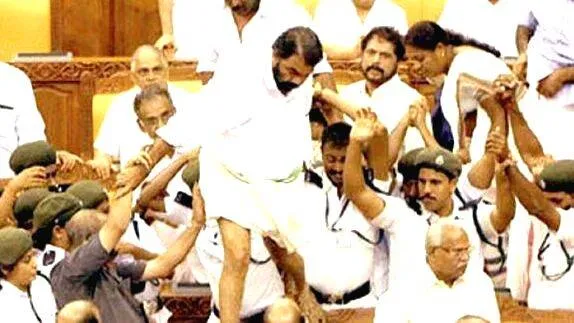

The Supreme Court ruling that the six Kerala MLAs involved in the notorious assembly ruckus case must face trial is a major setback for the state government. On March 13, 2015, during the presentation of budget of the then Finance Minister K M Mani, incidents that happened were the ones that humiliated Kerala in front of the world. It took place in the Assembly on the occasion of Mani's last budget presentation. The atrocities committed by the LDF leaders who came to the House to prevent the presentation of the budget by Finance Minister Mani at any cost were unparalleled. The House had literally become a battleground. Many of the equipment was broken. Even the speaker's chair was pushed down. Some of the members were also manhandled. In the midst of this commotion, the finance minister somehow managed to present the budget. The previous government had filed a criminal case against six legislators then in connection with the incident, which has become the biggest stigma in the history of the state assembly. The subsequent Left government tried to withdraw the case but the trial court ruled that the case should continue. Later, the High Court took the same stand. While the government was trying to approach the Supreme Court with an appeal against the verdict, several centres had warned that the government’s move would backfire. Many saw the government's move as an attempt protect the offenders and to downplay the incident, which was unanimously condemned by civil society in the state, and to water down those involved.
What was expected has now happened. The government's application to withdraw the case was rejected by bench comprising Justices M.R. Shah and DY. Chandrachud, It has also asked for a trial against the six leaders who have been named as accused in the case. One in six is the current Education Minister V.S Shivankutty.
The sharp remarks from the Supreme Court are a correction to the public perception that any action in the Assembly has immunity. The atrocities in the Assembly were a violation of constitutional rights. Therefore, the government's request to withdraw the case itself is highly inappropriate and unlawful. The court rejected the government's contention that the Speaker had the sovereignty to make the decision as the incident took place inside the Assembly and that the case was filed against the MLAs without even seeking the Speaker's permission. Criminal offenses should be seen as such, even within the House. It is noteworthy that the Court observed that it is a violation of the Constitution and the rule of law to seek protection by associating the special rights of the Assembly House with those who have committed crimes to the contrary. Wrongdoing is wrongdoing whether it is inside or outside the House. It is ridiculous to seek protection after committing mischief. That is what is happening in this case. The case also seeks to convince the public that anyone who commits acts of vandalism must be punished. The judgment of the Supreme Court upholds the dignity of the Constitution and the rule of law.